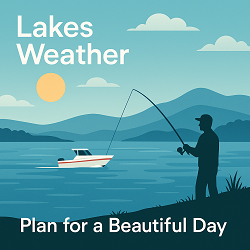Juneau, AK Weather Forecast and Current Conditions
Current Conditions From Nearby Local Station

Feels Like 11°F
at
Point Forecast at a Glance







7-Day Temperature Trend
Week Ahead Summary
High temperatures remain relatively stable through the week, ranging from 7°F to 17°F. Unsettled weather expected with snow likely on at least 5 days.
Climate Context
This week's forecast shows temperatures running 19°F below the historical average for December. Normal highs for this period are around 33°F with lows around 26°F.
This Date in Weather History
1967 - From December 12th through the 20th a series of snowstorms buries Flagstaff, AZ with nearly 85 inches of snow.
Juneau, AK 7 Day Weather Forecast Details
Friday Dec 12

Day: Sunny, with a high near 14. Northeast wind 15 to 20 mph decreasing to 5 to 10 mph in the afternoon.

Night: Clear, with a low around 11. Northeast wind 5 to 10 mph.
Saturday Dec 13

Day: A 30 percent chance of snow, mainly after 3pm. Partly sunny, with a high near 16. Northeast wind 25 to 30 mph.

Night: A 50 percent chance of snow. Mostly cloudy, with a low around 10. Northeast wind around 25 mph.
Sunday Dec 14

Day: Snow likely, mainly after noon. Cloudy, with a high near 15. Northeast wind around 25 mph. Chance of precipitation is 70%.

Night: Snow. Areas of blowing snow between 9pm and 3am. Low around 10. Chance of precipitation is 80%.
Monday Dec 15

Day: Snow likely. Cloudy, with a high near 17. Chance of precipitation is 70%.

Night: Snow likely, mainly before 3am. Cloudy, with a low around 9.
Tuesday Dec 16

Day: A chance of snow. Mostly cloudy, with a high near 15.

Night: A chance of snow before 9pm. Mostly cloudy, with a low around 5.
Wednesday Dec 17

Day: Partly sunny, with a high near 11.

Night: Mostly cloudy, with a low around 1.
Thursday Dec 18

Day: A chance of flurries. Partly sunny, with a high near 7.
About Juneau, AK
Content from Wikipedia, licensed under CC BY-SA 3.0.
How We Provide Better Local Weather
Current conditions: We use the nearest available station to your location - including professional MESONET/MADIS and local weather stations - often miles closer than regional airports.
Forecasts: National Weather Service point forecasts predict for your specific area, not broad regional zones, making them far more relevant to your location.



